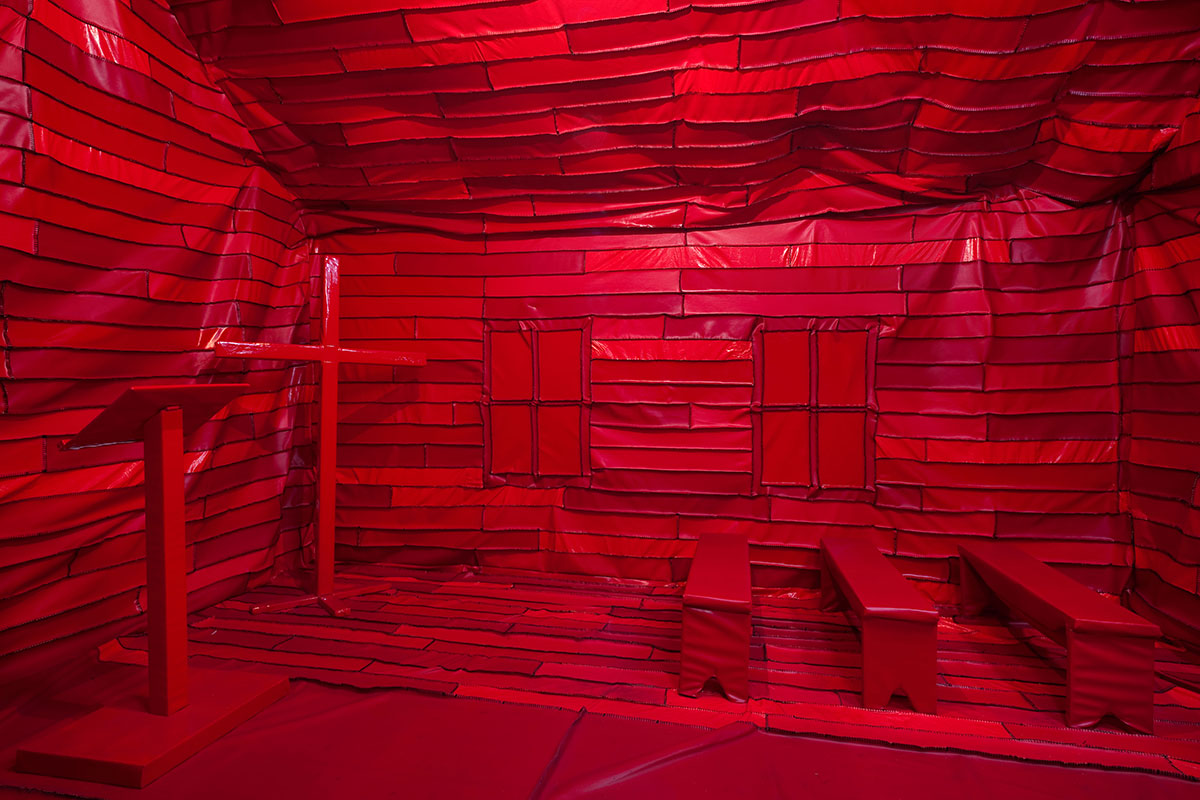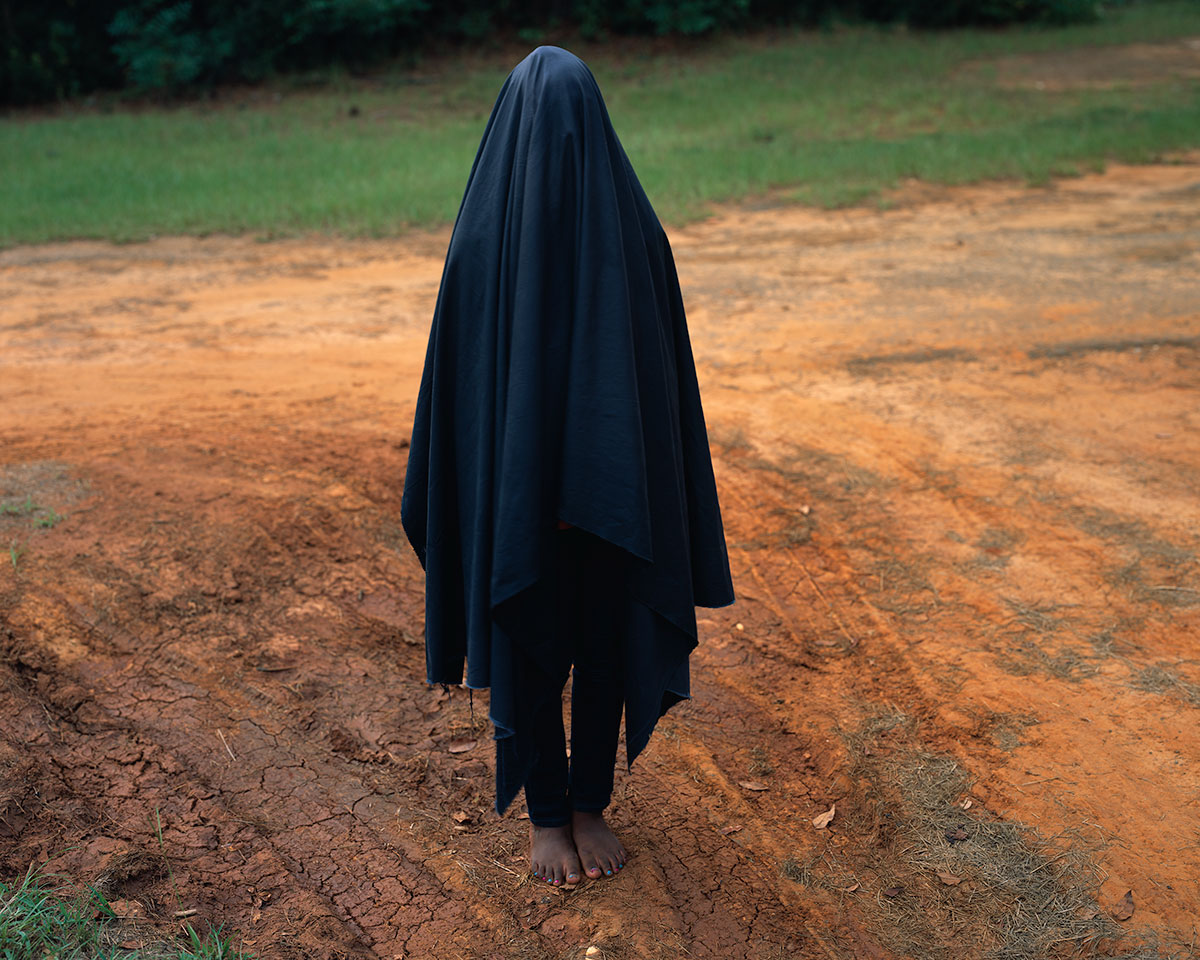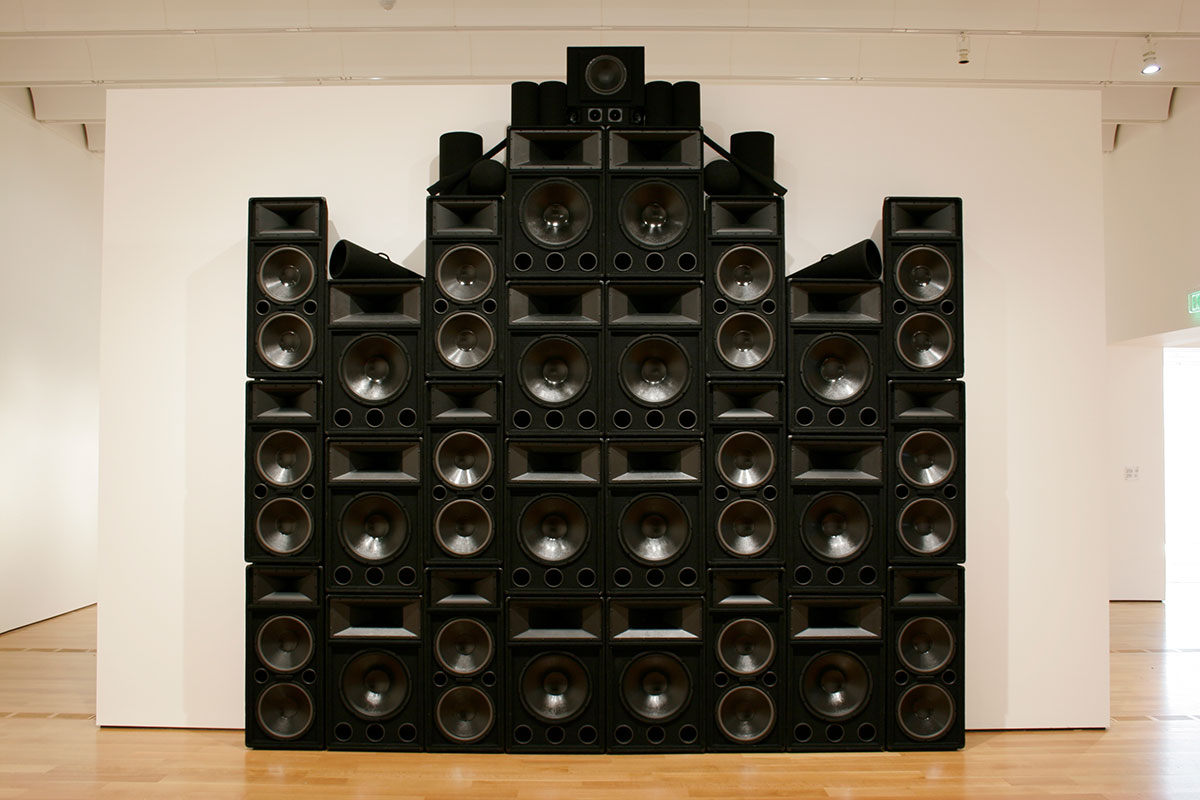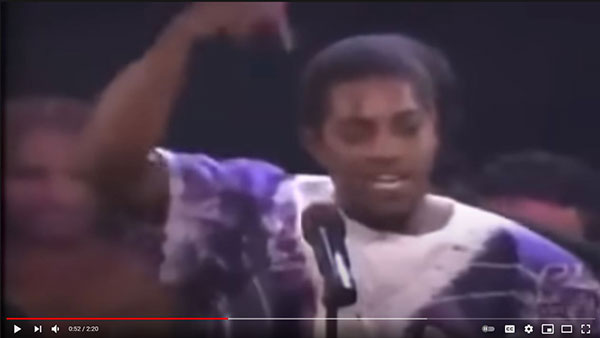“Dirty South” is an expression that endearingly refers to the southern part of the United States—from Virginia to Florida, Texas, and the states in between—whose Black traditions and artistic expressions have shaped the culture of the region and the nation. The term describes an identity born out of the southern landscape and its agriculture as well as its diverse mix of races, ethnicities, practices, rituals, and beliefs—a flavorful amalgamation of African, European, Indiginous American, and Caribbean influences. The cultural, spiritual, and artistic practices passed down from enslaved Africans, in particular, figure prominently for their role in shaping regional and national identity and expression.
“The South’s got somethin’ to say!”
—André 3000
Those African American contributions, which flourished for centuries, had been largely recessed after the civil rights era. However in the 1990s hip-hop culture lifted them up, evoking not only the term but also a reverence for the Dirty South—giving the region, the culture, and the people their due. The encompassing term frames southern hip-hop that is infused with a more melodic style and with tempos and lyrical expressions rooted in soul, gospel, and funk. In a validating and thought-provoking declaration at the 1995 Source Awards, when the Atlanta duo known as OutKast won “Best New Rap Group,” André 3000—as he accepted the award amid boos from his East Coast and West Coast peers—famously proclaimed, “The South’s got somethin’ to say!”
According to Valerie Cassel Oliver, VMFA’s Sydney and Frances Lewis Family Curator of Modern and Contemporary Art, that proclamation resonated beyond hip-hop: “And it just begins to open the flood gates . . . to begin to really think and to meditate on the South as a site, as a source for inspiration, as a source from which we’re all drawing from.”
 Asterisks in Dockery (Blues for Smoke), 2012, Rodney McMillian (American, born 1969), vinyl, thread, wood, paint and lightbulb. Loan from Susanne Vielmetter Gallery, Los Angeles
Asterisks in Dockery (Blues for Smoke), 2012, Rodney McMillian (American, born 1969), vinyl, thread, wood, paint and lightbulb. Loan from Susanne Vielmetter Gallery, Los AngelesCassel Oliver curated The Dirty South: Contemporary Art, Material Culture, and the Sonic Impulse, VMFA’s groundbreaking art exhibition that investigates southern Black culture’s influences on American art, music, and other forms of cultural expression. While the exhibition, which opens May 22, 2021, focuses on the past 100 years, it acknowledges centuries of artistic contribution and influence. And as Cassel Oliver explains, “It is that persistence of traditions that evolve with each successive generation. . . . While it comes out of an African American expression, it really frames our collective expression.”
“. . . the South as a site,
as a source for inspiration,
as a source from which
we’re all drawing from.”—Valerie Cassel Oliver
The exhibition speaks to the complexities of cultural influence and the numerous tributaries that pour into a collective identity. One of the exhibition’s thought-provoking and poignant works, Caspera (below), an inkjet print by RaMell Ross, profoundly embodies the exhibition’s three themes, which Cassel Oliver identifies as prevailing references to the landscape, the Black body, and belief systems. This striking print, which suggests a union of physical and spiritual realms, captures the soil’s rich color and texture, partially exposed youthful skin belonging to an otherwise cloaked body, bare feet on clay, and an almost ghostly shroud. Ross, a visual artist based in Alabama and Rhode Island, is also a filmmaker and writer. He seeks to untangle the “myth of blackness” at the root of Southern lore. With this shrouded figure, he points to human lives made invisible and delivers visibility and agency for the communities of the African American South.
 Caspera, 2019, RaMell Ross (American, born 1982), inkjet print mounted on dibond. Virginia Museum of Fine Arts, National Endowment for the Arts Fund for American Art. Image: ©️ RaMell Ross
Caspera, 2019, RaMell Ross (American, born 1982), inkjet print mounted on dibond. Virginia Museum of Fine Arts, National Endowment for the Arts Fund for American Art. Image: ©️ RaMell RossThere are more than 140 works on view in the exhibition, representing a range of artists, generations, and media. Paintings, prints, sculpture, photography, video, and film, as well as sound and large-scale installations display the influences of Black culture as a force that extends beyond the region to affect the broader artistic and cultural movement of American modernism. Highlights include Asterisks in Dockery (above), which is a large-scale vinyl installation you can enter, and the 14-foot-high Coronation Theme (below), which is an assembly of speakers shaped like Atlanta’s historic Ebenezer Baptist Church and plays organ music, sermons, songs, prayers, and protests.
 Coronation Theme: Organon, 2008, Nadine Robinson (American, born England, 1968), speakers, sound system, mixed media. High Museum of Art, Atlanta, given by John F. Wieland Jr. in memory of Marion Hill, 2008.175. Image: © Nadine Robinson
Coronation Theme: Organon, 2008, Nadine Robinson (American, born England, 1968), speakers, sound system, mixed media. High Museum of Art, Atlanta, given by John F. Wieland Jr. in memory of Marion Hill, 2008.175. Image: © Nadine RobinsonWhile concentrating on visual art, the exhibition’s study also traces the sonic roots of southern hip-hop, beginning with blues. Personal possessions of music icons from Bo Diddley to Cee Lo Green and other objects of material culture add an innovative dimension to the exhibition’s story. The experience extends beyond gallery walls to include a SLAB vehicle in the museum’s Cochrane Atrium; a sonic work by John Sims titled Afro-Dixie Remixes in the Confederate Memorial Chapel on the museum’s grounds; and an installation by Paul Rucker titled Storm in Time of Shelter in VMFA’s Mellon Gallery. As of April 24, the latter two works can be seen in advance of the exhibition’s opening. At the end of the exhibition’s main galleries, visitors will encounter an interactive space for exploring six geographical areas, or “epicenters,” of influence and samples of various genres of music. The Dirty South promises an immersive, multimedia art experience as rich as its name.
